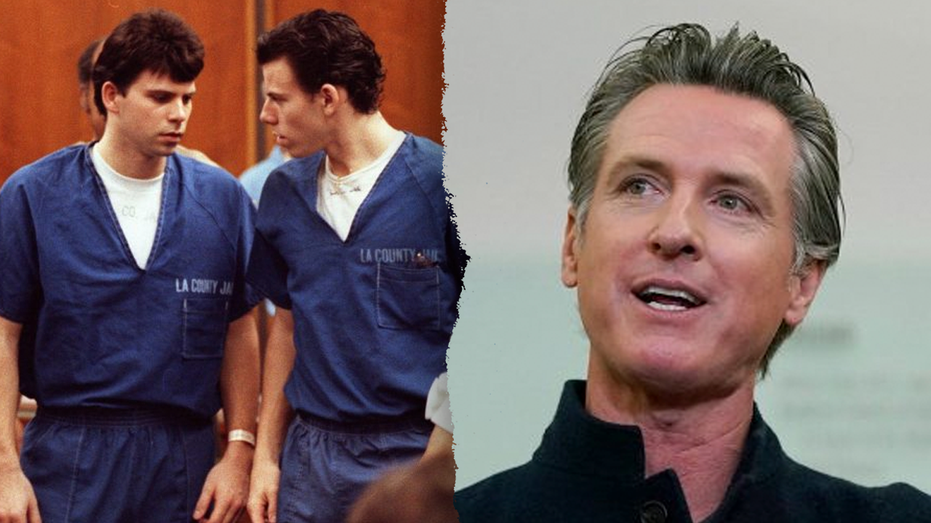As conservatives push for more babies, Congress proposes cuts that could hurt families, toddler and infants
Megan Newsome was 27 weeks pregnant when she was diagnosed with a rare form of non-Hodgkin lymphoma, a cancer of the blood. After her son was born four weeks early, Newsome underwent intensive chemotherapy treatments while her newborn gained strength in the neonatal intensive care unit. Newsome, who lives in Maine, suddenly found herself navigating […] The post As conservatives push for more babies, Congress proposes cuts that could hurt families, toddler and infants appeared first on The Hechinger Report.


Megan Newsome was 27 weeks pregnant when she was diagnosed with a rare form of non-Hodgkin lymphoma, a cancer of the blood. After her son was born four weeks early, Newsome underwent intensive chemotherapy treatments while her newborn gained strength in the neonatal intensive care unit. Newsome, who lives in Maine, suddenly found herself navigating a complex and expensive web of her own health challenges, as well as her son’s.
Luckily for Newsome, there was some relief, thanks to America’s federally funded safety net programs. During her pregnancy and treatment, Newsome relied on Medicaid. She enrolled in a food benefits program. And her son enrolled in Early Head Start, where he had access to education, developmental screenings and socialization.
Now, many of the programs Newsome and millions of others rely on to support their infants and toddlers are at grave risk due to cuts proposed under President Donald Trump’s “skinny” budget or by congressional Republicans. These cuts would have an outsized impact on the youngest, most vulnerable Americans, experts say.
Unlike funding for preschool and older children, which largely comes from state sources, funding for programs that support babies and toddlers mostly comes from the federal government. Proposed cuts are threatening the infrastructure that babies and toddlers rely on at a time when costs are high for families, said Melissa Boteach, chief policy officer at the nonprofit Zero to Three, which focuses on infants and toddlers.
Here are a few programs targeting the country’s youngest that could face devastating cuts:
- Medicaid: Cuts to Medicaid, a program that provides health care to lower income children and families, are a real possibility. Lawmakers are also discussing changes to eligibility rules, which could make it harder for families to qualify. Trump’s budget, released earlier this month, calls for $674 million in cuts to the Centers for Medicare and Medicaid Services — though officials claim benefits would not be affected. More than 40 percent of births are covered by Medicaid. And millions of infants access critical services like health care and therapies for developmental delays through Medicaid. States that have expanded Medicaid have seen greater declines in infant mortality rates.
- Supplemental Nutrition Assistance Program (SNAP): Cuts to the food aid program, which are under discussion by lawmakers, could increase food insecurity and affect health and development for infants and toddlers. More than 4.5 million children under the age of 5 received SNAP benefits in 2022. Research shows children who receive SNAP benefits have better nutrition, lower risks of obesity, fewer hospitalizations and develop better emotionally and academically compared to their peers who are eligible but who do not receive such benefits.
- Low-Income Home Energy Assistance Program (LIHEAP): In April, the Trump administration terminated the entire staff of LIHEAP, a program that helps low-income families pay home energy bills, often connected to extreme heat or cold. Trump’s budget proposes cutting more than $4 million from the program. “We know that babies, as well as elderly, are some of the most vulnerable people to climate change and extreme weather,” said Boteach. “And so when you’re cutting off cooling and heating assistance, and especially as we’re heading into summer, you’d be leaving a lot of families without basic energy assistance.”
- Child Care Access Means Parents in School (CCAMPIS): Trump’s budget calls for the elimination of the program that subsidizes child care for college students, calling it “unaffordable and duplicative.” Eighteen percent of undergraduate students are parents. Government research has found student-parents who use subsidies from the program are more likely to stay in school; and higher education levels for parents are associated with better care and play interactions with infants and toddlers and later success in school and work.
- Social Services Block Grant (SSBG) and Temporary Assistance for Needy Families (TANF): While programs like Head Start and the Child Care and Development Block Grant are the most well-known sources of federal funding for child care, other federal funding streams are also used by states, including these two. Many states have taken advantage of the ability to transfer funds from TANF to their child care subsidy programs — transferring more than $1 billion in 2023 alone. Similarly, the block grant is also used by states for some child care funding. Research suggests that eliminating that grant could cause more than 39,000 children to lose care. Cuts or the elimination of these programs have been proposed by congressional Republicans.
Many programs serving the most vulnerable families have already been hobbled — or obliterated — by prior cuts. The Trump administration gutted a Centers for Disease Control and Prevention (CDC) office that coordinates newborn hearing screenings, slashed maternal health programs and terminated nearly half of the staff in the office of the National Center on Birth Defects and Developmental Disabilities. In early April, a committee that determines which rare diseases to test for during early infancy was disbanded, as was the CDC’s team that investigates and prevents lead poisoning.
For Newsome, federal support programs weren’t just helpful, they likely kept her and her son alive, she said. Her toddler is now almost 2 and is walking, feeding himself and working on potty training. Newsome is entering her first semester of college to earn a degree in business administration. Without the help they’ve received, “We definitely wouldn’t be in any of the places we are today,” Newsome said. “Both of us are thriving.”
Contact staff writer Jackie Mader at 212-678-3562 or mader@hechingerreport.org.
This story about Medicaid cuts was produced by The Hechinger Report, a nonprofit, independent news organization focused on inequality and innovation in education. Sign up for the Early Childhood newsletter.
The post As conservatives push for more babies, Congress proposes cuts that could hurt families, toddler and infants appeared first on The Hechinger Report.



















![[DEALS] The 2025 Ultimate GenAI Masterclass Bundle (87% off) & Other Deals Up To 98% Off – Offers End Soon!](https://www.javacodegeeks.com/wp-content/uploads/2012/12/jcg-logo.jpg)



-Olekcii_Mach_Alamy.jpg?width=1280&auto=webp&quality=80&disable=upscale#)























![Air Traffic Controller Claps Back At United CEO Scott Kirby: ‘You’re The Problem At Newark’ [Roundup]](https://viewfromthewing.com/wp-content/uploads/2025/05/scott-kirby-on-stage.jpg?#)
































